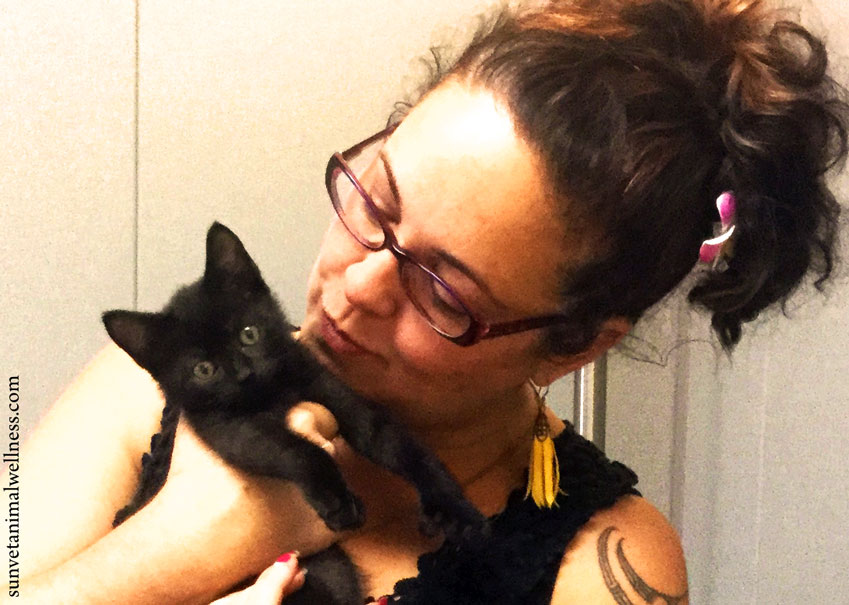Hydrate, hydrate, hydrate! Our four-legged furry friends are composed of about 70% water. The prey that canines and felines eat in the wild is 70 – 90% water, but most dry dog and cat food is less than 10%. Uh-oh, what is wrong with this picture? And, more importantly, what can you do as a committed and loving caregiver to rain this much needed hydration down on your delightful buddies?

- Good hydration is an important part of kitten care.
Water is life. It helps with the digestion of foods, removal of wastes and control of body temperature.The ability of water to dissolve and mobilize so many substances allows our cells to access valuable nutrients, minerals and chemicals in our various biological processes. Proper dog and cat hydration can help to prevent dis-ease, enable more emotional balance, help them perform better, lose weight, lessen musculoskeletal discomfort, flush out waste products and prevent headaches.
The question is, what are some practical ways we can help increase this vital element for our animal companions? To help, here are…
Ten Tips for Dog and Cat Hydration
- If you are going to stick with a dry food diet, try adding warm water or broth to the kibble before feeding. I advocate adding this at least 15-20 minutes before feeding to allow it to absorb fully. Add enough fluid so that there is still a bit of moisture in the bowl once the kibble is soft. Of course, yummy broth is usually preferred over water by most diners!
- Crock pots are invaluable as a tool to make bone broth with delicious meat morsels.You can also add in green vegetables. Generally, a 6 – 7 hour cook time on the LOW setting will sufficiently create a nutritious broth, which can be divided into portions and stored in the freezer for easy reheating.
- For those of you who prefer to buy broth, choose one that is low or no sodium.
- People with kitties, or some small dogs, will want to gradually (and I mean gradually!) introduce the hydration aspect to their food. These beings may be more picky about how their food is presented to them.
- Feed canned food instead of dry. Canned food is not without its own problems related to the over-cooking and the contamination from the linings of the cans, but it does provide much more hydration than the kibble. Some folks will even add a bit more water to the canned food, just keep in mind you want it to remain palatable.
- Raw diets typically have adequate hydration for cats and dogs. For those of you wanting to experiment with raw diets, I suggest you work with a holistic veterinarian who is familiar with, and interested in, diets and nutrition.
- Always go slow with any changes!
- Keep bowls of fresh, vibrant water available to your friends both inside and out. If you have an older or debilitated dog or cat, hydration is even more important. Make sure there are multiple bowls inside, placed at an appropriate height. Some older, large breed dogs may not make the effort to drink if they are uncomfortable, so it can help if their bowls are raised up off the floor.
- Carry water on your adventures along with a travel bowl for pit stops.
- Pet drinking fountains are primo! Get one that is made out of stainless steel or ceramics. Plan on cleaning it every ten days. This can be especially helpful with cat hydration!
Our mutual need of water demonstrates that we share a common heritage – we are all one! Shower your cherished companions with love and H2O and know that their joints, organs and cells will be floating in a sea of well-being!
Shine on!

